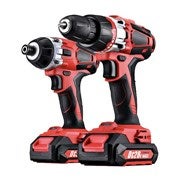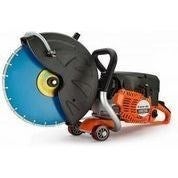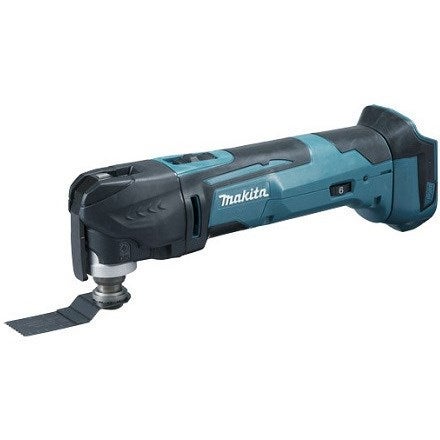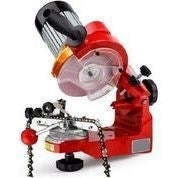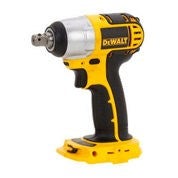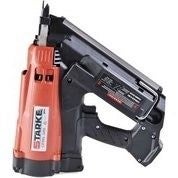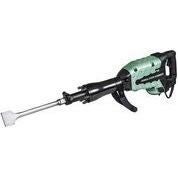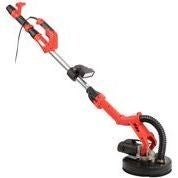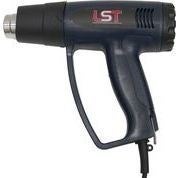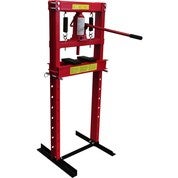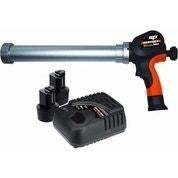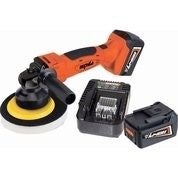 WAS
WAS
 WAS
WAS
 WAS
WAS


In a nutshell, power tools are devices that use either electricity (plugged into a power point) or rechargeable batteries to perform tasks with significantly more speed and far less physical effort than manual tools. These incredibly versatile tools are indispensable across a huge variety of applications. In the DIY world, they're used for everything from hanging a picture (with a drill, of course!) to building custom furniture. For professional construction, they're the backbone of framing, cutting, fastening, and demolition. Woodworking relies heavily on precision saws and sanders, while automotive repair benefits immensely from impact wrenches and grinders. Basically, if there's a task that needs to be done faster, more accurately, or with less strain on your body, there's probably a power tool for it.
How Do Power Tools Work
At their core, power tools are all about converting energy. They take electrical energy (either from a wall socket or a battery) and transform it into mechanical motion. This mechanical motion is what actually drives the tool's action, whether it's spinning a drill bit, reciprocating a saw blade, or vibrating a sander.
The two main ways power tools get their juice are:
-
Corded electric power: These tools plug directly into a power point, giving you consistent power without worrying about battery life. They're often preferred for stationary tools or tasks where you need continuous, high power.
-
Rechargeable batteries (cordless): These have become incredibly popular, offering amazing portability and convenience. You can take them anywhere on the job site or around your home without being tethered to an outlet.
Inside, the motor is the heart of the tool, taking that electrical energy and generating rotational force. This force is then controlled by a switch and transferred through various drive mechanisms (like gears or belts) to the working part of the tool – say, the chuck of a drill or the blade of a saw.
Benefits of Using Power Tools Over Manual Tools
-
Increased Speed: Tasks that might take ages with a manual tool can be completed in mere seconds with a power tool. Imagine sanding a large timber slab by hand versus with an orbital sander – no contest!
-
Improved Efficiency: Not only are they faster, but power tools also allow you to complete more work in less time, making your projects more efficient overall.
-
Higher Precision: Many power tools are designed for greater accuracy, allowing you to achieve cleaner cuts, more uniform finishes, and consistent results that are much harder to replicate manually.
-
Reduced User Fatigue: Power tools take a lot of the physical strain out of demanding tasks, saving your hands, arms, and back. This means you can work longer and more comfortably without getting worn out.
Ultimately, power tools empower you to accomplish more complex or demanding tasks with superior results, making them an invaluable part of any serious DIYer's or professional's toolkit.
Let's Get an Understanding of Different Types of Power Tools
Now that we know what power tools are and how they generally work, let's explore the different types you'll commonly encounter. It's helpful to think about them in a few ways, especially by what job they're designed to do.
Common Types of Power Tools
Let's look at some of the most common power tools you'll find in any workshop or on a job site:
Drills and Drivers
These are arguably the most essential power tools for any DIY lover or professional. Drills are primarily used for creating holes, while drivers (or impact drivers) excel at driving screws and other fasteners quickly and efficiently. You'll find both corded models, which offer continuous power for heavy-duty drilling, and incredibly popular cordless models, which provide fantastic portability for jobs around the house or out on site. Key features to look for include variable speed for control over different materials, and torque settings to prevent over-tightening screws.
Saws
These are indispensable for cutting various materials. Each type is designed for specific tasks:
-
Circular saws are your workhorses for making straight, fast cuts through timber, plywood, and even some metals, perfect for framing or cutting sheet goods.
-
Jigsaws are excellent for cutting intricate curves and shapes in wood, plastic, and thin metal, ideal for custom designs or cutting out sinkholes.
-
Reciprocating saws (often called "recip saws") are demolition kings, designed for rough, aggressive cuts through a wide range of materials like wood with nails, plasterboard, and metal pipes.
Sanders and Grinders
-
Sanding tools are all about surface finishing. Orbital sanders are versatile for general-purpose sanding, providing a swirl-free finish. Belt sanders are powerful for rapid material removal on larger, flat surfaces. They're essential for preparing timber for painting, staining, or just achieving that smooth, professional feel.
-
Grinders are for more aggressive material removal, sharpening, or cutting metal. An angle grinder is incredibly versatile, used for cutting metal, grinding down welds, sharpening tools, and even polishing.
Nailers and Staplers
These tools dramatically speed up fastening projects. Nail guns are fantastic for everything from heavy-duty framing and decking to more delicate trim work and cabinetry. You'll find various types, including pneumatic (air-powered, common on job sites) and electric (corded or battery-powered, popular for DIY). Staplers are similar but use staples, great for upholstery, insulation, or attaching thin materials.
Rotary Tools
Often small and handheld, rotary tools are incredibly versatile for precision work. With a huge array of interchangeable bits, they can be used for detailed engraving, polishing, grinding, sanding, cutting, and even routing in miniature. They're fantastic for crafts, model making, or intricate repairs.
Impact Wrenches and Ratchets
If you've ever struggled with a stubborn bolt, you'll appreciate impact wrenches and ratchets. These power fastening tools deliver high torque in quick bursts, making them perfect for loosening and tightening nuts and bolts. They're absolute essentials in automotive repair, for changing tyres, or for heavy-duty assembly where high fastening power is needed.
Corded vs. Cordless Power Tools
As we touched on earlier, a key distinction among power tools is how they're powered. Corded tools rely on a continuous electrical supply via a power cord, offering consistent power without battery concerns. Cordless tools, on the other hand, run on rechargeable batteries, providing unparalleled portability and flexibility. We'll dive into the detailed pros and cons of each in the next section, as it's a really important decision for your toolkit!
Beginner-Friendly vs. Professional-Grade Tools
Beginner-friendly tools are generally designed with simplicity, ease of use, and affordability in mind. They often have fewer complex features, lighter weight (which can be a plus for new users), and are perfect for occasional home DIY tasks like hanging pictures, assembling flat-pack furniture, or basic repairs. They're a great entry point to building your toolkit without a huge initial investment.
Professional-grade tools, on the other hand, are built for daily, rigorous use in demanding environments. They boast significantly higher durability, enhanced performance, and often come with specialised features tailored for specific trades. They're constructed with tougher materials, more powerful motors, and are designed to withstand the wear and tear of a construction site or busy workshop. While they come with a higher price tag, their longevity, power, and precision make them a worthwhile investment for those who use tools extensively for work or serious projects.
Assessing Power and Features
Once you've got a handle on the types of tools, it's time to dig a little deeper into the technical specifications and features. Understanding these will help you choose a tool that's truly up to the task you have in mind.
Voltage Ratings for Cordless Tools: You'll typically see voltage ratings like 12V, 18V, or even 36V. Generally, a higher voltage indicates more power and longer run time.
-
12V tools are compact and lightweight, perfect for lighter-duty tasks and getting into tight spaces.
-
18V tools are the sweet spot for most DIYers and many professionals, offering a great balance of power, run time, and versatility for a wide range of jobs.
-
36V (or higher) tools are for the really heavy-duty applications, providing maximum power for demanding tasks that traditionally required corded tools.
-
RPM (Rotations Per Minute) for Speed and Control: RPM indicates how fast the tool's output shaft spins. For drills and sanders, higher RPM means faster work, but it's not just about speed. Many tools offer variable speed control, which is incredibly valuable. This allows you to adjust the RPM based on the material you're working with (e.g., slower for metal, faster for wood) or the precision required, giving you much better control and preventing damage to your workpiece.
-
Torque Levels for Fastening Power: Torque is the rotational force a tool can apply, and it's particularly important for drills and drivers, especially impact drivers and wrenches. Higher torque means the tool can drive larger screws or loosen tighter bolts with less effort. If you're going to be driving lots of long screws or working on automotive tasks, a tool with good torque is essential.
Additional Features to Consider
-
Brushless motors: These are becoming standard in higher-end cordless tools. They're more efficient, run cooler, last longer, and deliver more power than traditional brushed motors – definitely worth the investment if you're a frequent user.
-
Ergonomic grips: A comfortable, well-balanced tool reduces fatigue, especially during longer projects. Always try to hold a tool before buying if you can!
-
LED work lights: Built-in lights illuminate your workspace, which is surprisingly handy, especially in poorly lit garages or shadowed areas.
-
Battery indicators: For cordless tools, a clear battery level indicator helps you manage your work and avoid unexpected power loss.
Power Tools Reviews
-
3/08/2025
Everything needed in one place for all the DIY jobs at home.
Xxx
-
10/07/2025
Still need to crack wheel nut with wheel brace to undo them, but other wise works ok for the price,
MT1818
-
24/06/2025
This drill is great
Kat
-
18/06/2025
Happy so far
Biffo
-
10/06/2025
Great compound saw for the small jobs
V-man
-
9/06/2025
Bought 2 weeks ago, working great.
Vin007
-
14/05/2025
fast delivery
Fatalbert
-
7/05/2025
Have bought it for a project I'm doing at home, haven't started to project as yet but this will the task easier.
Numpty
-
4/05/2025
Happy with this product
Daaku maharaj
-
3/05/2025
Does not cut a clearance taper, the cutting face edge is parallel with the trailing edge for drills, does the cutting face of chisels OK. Could have a better instruction manual. Needs clamping to a bench.
Bob27
-
30/04/2025
Excellent & versatile tool
Jeff
-
24/04/2025
I bought this 3 weeks ago very happy
Happy as Larry
-
14/04/2025
I bought this so that our home would have all aspects in the one box, my husband is Gobsmack at the product, It is worth its weight in gold especially with the drill also. i told him its mine keep his eyes off it
Gobsmacked
-
14/04/2025
Happy with my purchase
Robmus
-
13/04/2025
Purchased to be used by home handy man and i have found it to be good value meeting the small number of jobs that i would do.
Roey




